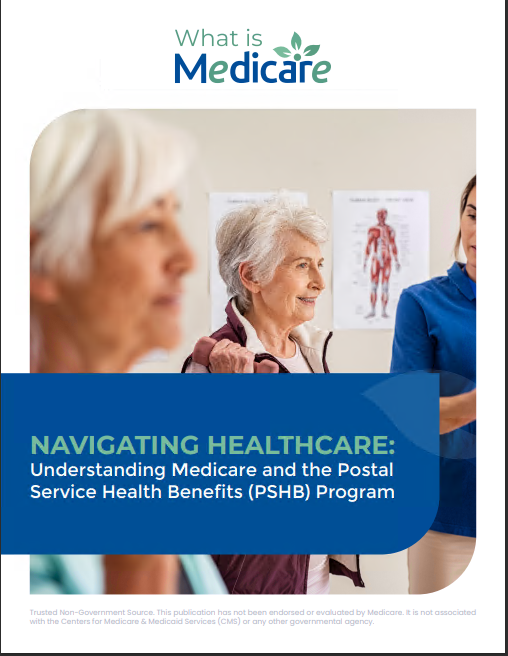Key Takeaways
-
Medicare Advantage and Medicare Supplement plans serve different purposes, and comparing them directly helps clarify what kind of healthcare coverage suits your lifestyle and financial expectations in 2025.
-
Understanding differences in cost-sharing, provider flexibility, and added benefits can help you avoid unpleasant surprises during your Medicare journey.
Understanding the Core Differences
Medicare Advantage and Medicare Supplement plans both work with Original Medicare, but they serve very different roles in how they deliver healthcare and manage your expenses.
-
Medicare Advantage (Part C): These are bundled plans that include Medicare Part A and Part B coverage and often incorporate additional features like dental, vision, or hearing benefits. You typically receive your care through a network of providers.
-
Medicare Supplement (Medigap): These plans help cover costs that Original Medicare doesn’t, such as deductibles, copayments, and coinsurance. They are not standalone and only work in conjunction with Original Medicare.
1. Enrollment Windows and Timing Matter
In 2025, enrollment timing continues to be a critical factor. The type of plan you want will determine when you’re eligible to sign up without penalties or medical underwriting.
-
Medicare Advantage: You can enroll when first eligible for Medicare (Initial Enrollment Period), during the Annual Enrollment Period (October 15 to December 7), or during the Medicare Advantage Open Enrollment Period (January 1 to March 31).
-
Medicare Supplement: The best time to enroll is during your Medigap Open Enrollment Period — a six-month window that starts when you turn 65 and are enrolled in Part B. During this time, you have guaranteed issue rights and can’t be denied coverage.
Missing these windows may mean higher costs or being denied coverage, especially with Supplement plans.
2. Differences in Monthly Costs and Out-of-Pocket Spending
In general terms:
-
Medicare Advantage plans may have lower monthly premiums, but you could face more frequent copays and coinsurance when accessing services. There are maximum out-of-pocket limits, which in 2025 are capped at $9,350 for in-network services and $14,000 for combined in- and out-of-network care.
-
Medicare Supplement plans usually involve higher monthly premiums, but they significantly reduce or even eliminate many out-of-pocket costs. There’s no official out-of-pocket cap, but the coverage tends to be more predictable.
If you see doctors often or anticipate hospital stays, the difference in cost-sharing structures becomes very important.
3. Access to Providers and Network Limitations
One major distinction in 2025 is provider flexibility.
-
Medicare Advantage: Typically operates through provider networks like HMOs or PPOs. You may need referrals for specialists, and going out-of-network could cost more or may not be covered at all.
-
Medicare Supplement: You can see any doctor nationwide who accepts Medicare, with no network restrictions. That’s a key benefit for those who travel or prefer wide provider access.
4. Coverage of Additional Services
Medicare Advantage plans often advertise additional services beyond what Original Medicare offers, such as:
-
Dental care
-
Vision exams and eyewear
-
Hearing aids
-
Fitness memberships
Medicare Supplement plans don’t typically include these extras. Instead, they focus strictly on helping you pay the portion of your medical bills that Medicare doesn’t cover.
So while Supplement plans offer broader medical provider access, Advantage plans might offer more ancillary benefits in one package.
5. Prescription Drug Coverage
This is another area where the plans differ fundamentally.
-
Medicare Advantage: Most plans include built-in Medicare Part D (prescription drug) coverage.
-
Medicare Supplement: These plans do not include drug coverage. You would need to enroll in a standalone Part D plan separately.
If managing prescriptions is a concern, especially for chronic conditions, it’s essential to account for the total cost and structure of drug coverage.
6. Traveling with Your Medicare Plan
Where and how you travel plays a surprising role in which plan may be a better fit.
-
Medicare Advantage: Coverage is often limited to local or regional networks. Emergency care is covered anywhere in the U.S., but routine care may not be unless you’re within your plan’s network.
-
Medicare Supplement: Works across all 50 states as long as your provider accepts Medicare. Some plans even offer limited foreign travel emergency coverage.
For snowbirds or frequent travelers, that national portability can be a deal-breaker or deal-maker.
7. Plan Customization and Simplicity
-
Medicare Advantage: You’ll often choose from multiple plan structures with different coverage levels, networks, and rules. This means more research but potentially more tailored options.
-
Medicare Supplement: Plans are standardized by letter (e.g., Plan G, Plan N), which means each type offers the same benefits regardless of the company selling it. This makes it easier to compare options.
That standardization offers simplicity, while Advantage plans offer customization.
8. Medical Underwriting and Future Eligibility
One hidden aspect many people overlook is medical underwriting.
-
If you want to switch to a Supplement plan outside of your initial enrollment window, you may have to go through medical underwriting unless you qualify for a special guaranteed issue right.
-
Medicare Advantage has open enrollment periods annually, so switching between Advantage plans is often easier without worrying about your health history.
This flexibility difference may affect your long-term planning.
9. Changing Plans Down the Road
In 2025, your ability to switch between these plans depends heavily on your timing and health status.
-
Switching from Advantage to Supplement may involve medical underwriting unless you’re within a protected switch window.
-
Switching between Advantage plans or returning to Original Medicare with Part D coverage can generally be done during standard enrollment periods.
It’s much easier to move from a Supplement plan to an Advantage plan than the other way around.
10. Long-Term Financial Planning Implications
Over time, costs may add up differently depending on the type of care you use and your health trajectory.
-
Advantage plans may seem affordable at first glance, but the accumulation of copayments and coinsurance could surprise you if your health declines.
-
Supplement plans can offer more predictable costs, but you need to be prepared for higher monthly premiums from the start.
Think not just about next year — consider how your needs may shift over the next 5, 10, or 15 years.
Making a Side-by-Side Comparison Work for You
A side-by-side comparison is most useful when you personalize the data. Think about:
-
Your current health status and care usage
-
Prescription drug needs
-
How often you travel
-
Whether your preferred providers are in-network
-
Your budget and risk tolerance
Use a comparison worksheet or chart to visualize:
-
Monthly premium estimates
-
Expected annual out-of-pocket expenses
-
Network restrictions
-
Access to extra benefits
Taking the time to analyze each factor carefully in 2025 helps you feel more confident that you’re not just picking a plan — you’re choosing the right path for your healthcare future.
Choosing the Right Medicare Path in 2025
Both Medicare Advantage and Supplement plans come with strengths and limitations. You need to weigh your current lifestyle, budget, and healthcare preferences against the structural differences between these two paths.
Start with a clear look at what you need today, then layer on what you might need tomorrow. That long-term view can help guide your decision far better than just comparing premiums.
If you still feel uncertain or need help translating all of this into a decision, speak with a licensed agent listed on this website. They can help walk you through the options based on your unique needs.










